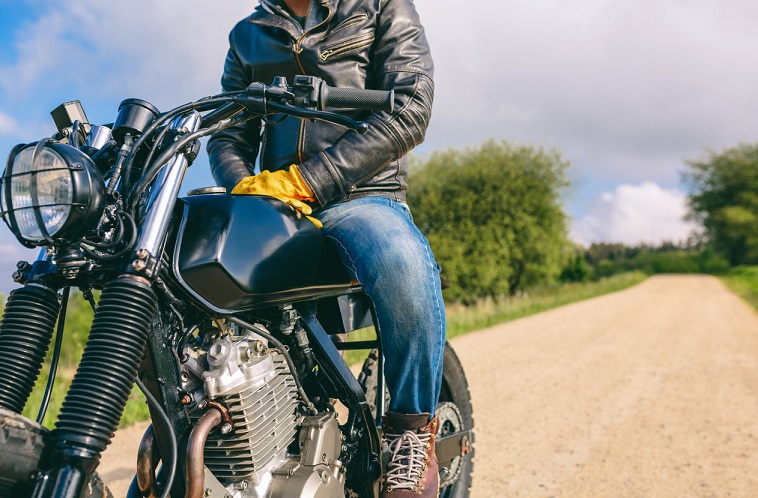2022 could be the year when stars align to allow a brief window of time in which policy makers are forced to examine a topic they normally fail to notice.
Motorcycling is a niche world inhabited by no more than 2.5% of the electorate, and so not one that gets most politicians feeling a need to engage.
For some riders the motorcycle is nothing more than the easiest way to get from A to B, but a larger proportion are enthusiasts. As minority group, motorcycle enthusiasts have a strong sense of community, but it is an identity blighted by outdated prejudices and stereotyping from outside its own ranks.
In 1964 Adrian Kaplan said: “Give a small boy a hammer, and he will find that everything he encounters needs pounding.” Boris has certainly found that interventionist, authoritarian activity is a Birmingham screwdriver that can be turned with impunity to many issues from pandemic to climate change. Over the last two years I have watched with fascination and growing concern the willingness of the electorate to accept the role of nail to the Government’s hammer. There seems a growing will to abandon any hope of nuance as both Government and governed play their roles.


The constant stream of alarm seems to have anaesthetised most to any sense of self determination. It has been noted that this has seen a worrying accumulation of mental health issues in the population. It comes as no surprise to see the issue repeated in the motorcycle community. The appearance of a new mental health charity, Mental Health Motorbike, is unlikely to be a coincidence.
One of the results of lockdowns was a big increase in cycling. Hardly a surprise when this was one of very few things you were allowed out of your house to do. There was much political noise about avoiding the dangers of public transport as ministers stood up to encourage public transport users to drive, cycle or walk instead.
This in turn led to increasing fears of a ‘car lead recovery’. The Department for Transport took to publishing weekly figures of transport activity showing the proportion of trips made by all transport modes compared to pre-pandemic days.
Well, I say all transport modes. What was immediately apparent to us motorcyclists was that the tables of data covered every conceivable transport mode except motorcycles. No data was supplied and the word motorcycle never slipped from the lips of a single minister.
The MotorcycleIndustry Association (MCIA) were publishing sales figures showing a very healthy growth in sales, but still the government failed to mention anything. I personally asked Baroness Vere of Norbiton, Minister for Roads why motorcycles were never mentioned by the Government.
The answer?
It is too complex for ministers to list every mode of transport. I found this astonishing especially given the discussion around e-scooters that are not yet a legalised transport mode.
So, you may well ask, what is likely to change in 2022?
The answer brings us back to the need of that small boy to pound everything with his hammer. The 2030 ban of Internal Combustion Engines (ICE) suffered from this myopic view of transport. It failed to recognise the existence of motorcycles. The hammer blow totally missed the tiny pin that is the motorcycle. Now, despite the fact that motorcycles account for just 0.4% of all transport tailpipe emissions of CO2 in the UK, the boy needs to keep pounding.
Of course you may think this will be a small issue of closing a minor loophole, but you would be wrong. In its refusal to properly consider motorcycling in transport policy the Government has become ignorant of its characteristics. On any environmental metric the motorcycle is not the problem. Indeed data recently published by the MCIA and Zemo Partnership shows that a small ICE motorcycle has a far lower full lifecycle carbon footprint than a battery electric car.
An action plan for the decarbonisation of motorcycles has already been delayed. Publication was promised before the end of 2021. In a seminar held by ACEM, the European motorcycle trade body, manufacturers were united in rejecting an interventionist approach to decarbonisation. They acknowledge the target, but see a variety of technologies being the answer, not a slavish focus on battery electric. Despite a post-Brexit landscape the motorcycle industry is global.
Loss of sales in a tiny fraction of that market represented by the UK is unlikely to change the industry direction despite Boris’s ambition for global leadership.
The Motorcycle Action Group are warning the Government of the strength of feeling amongst riders on this subject. Being asked to make sacrifices to save the planet is one thing, but being asked to sacrifice a significant part of your identity to appease the desire of a small boy to inappropriately pound a bolt with a hammer is another.
The government’s transport decarbonisation plan published in July 2021 promised: “We will consult this year on a phase outdate of 2035, or earlier if a faster transitionappears feasible, for the sale of new nonzero emission powered two and threewheelers (and other L category vehicles)”. The timeline for that consultation has quietly slipped. The date is yet to be announced, but is suggested to be February/March 2022.
Government and policy makers are going to have to grapple with the fact that motorcycles are not nails. Riders are very strongly opposed to being forced down a single technology route. The interventionist route is not welcomed by the industry. Banning a particular technology is a hammer that will be exposed as the wrong tool for the job.
This will of course attract much disbelief from beyond the motorcycling world and accusations will no doubt fly. Political theatre will be on the cards and a subject previously of no interest to politicians, may suddenly become the overnight superstar of political debate.









